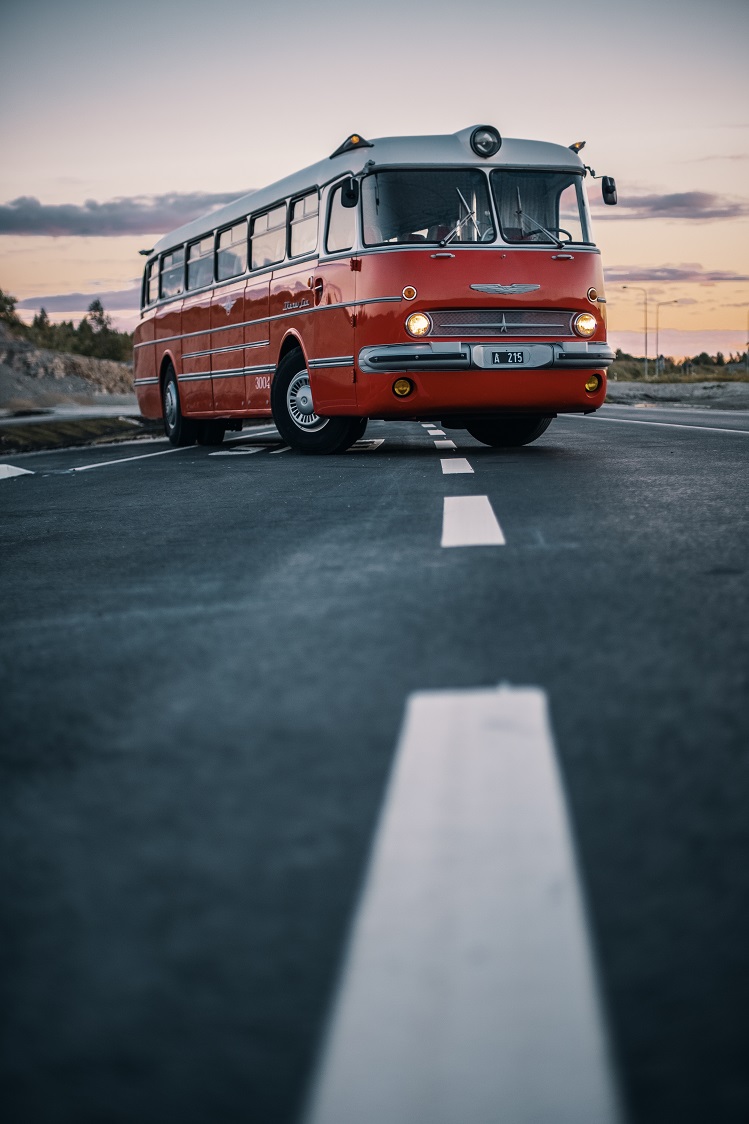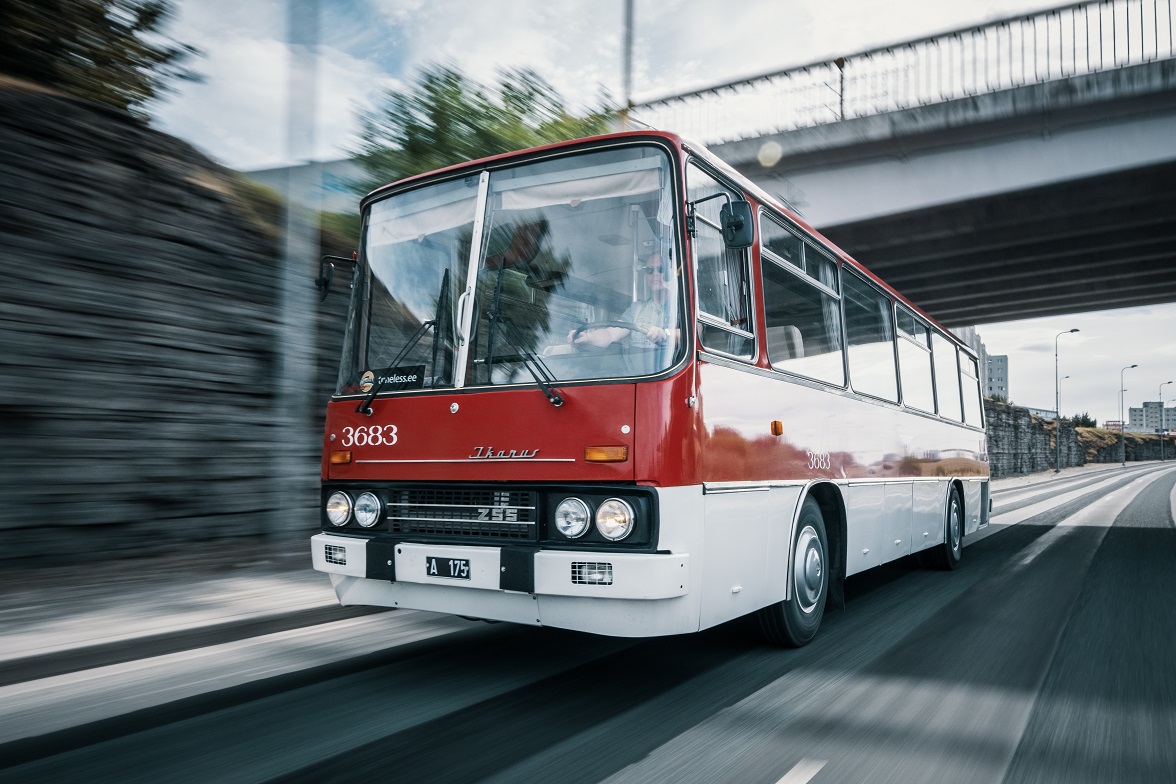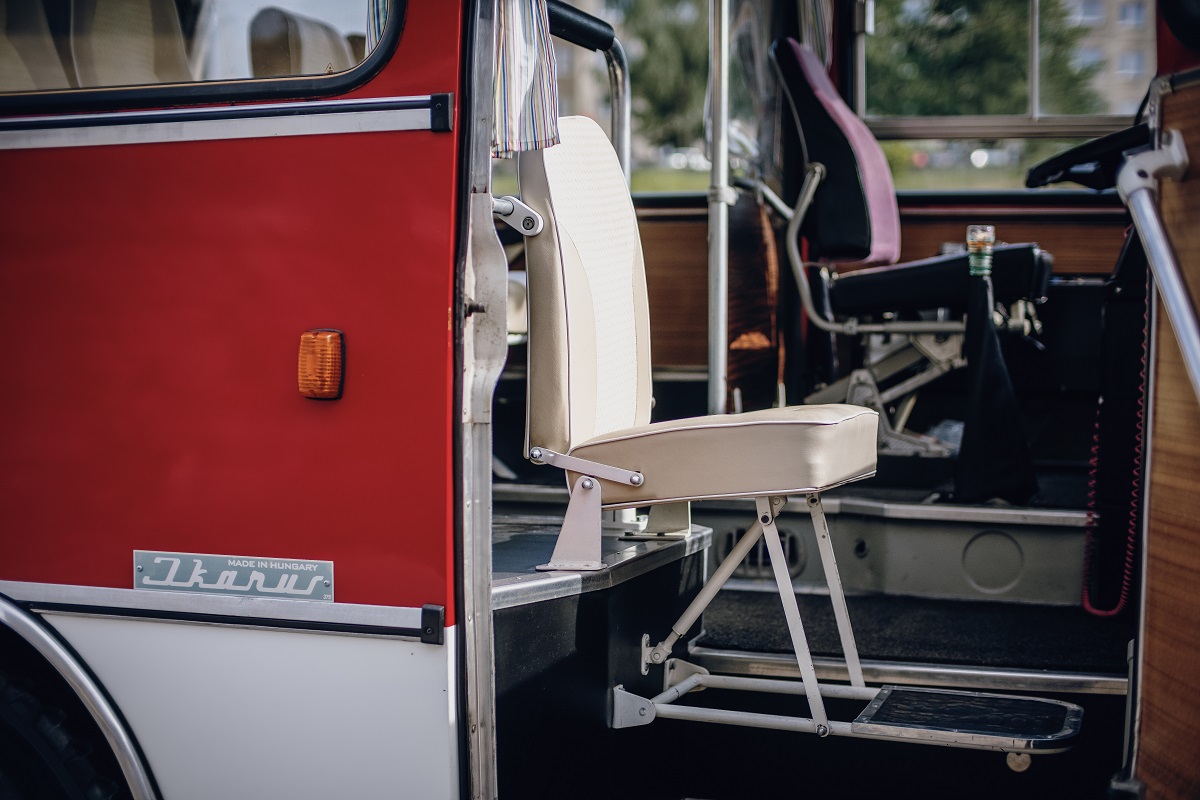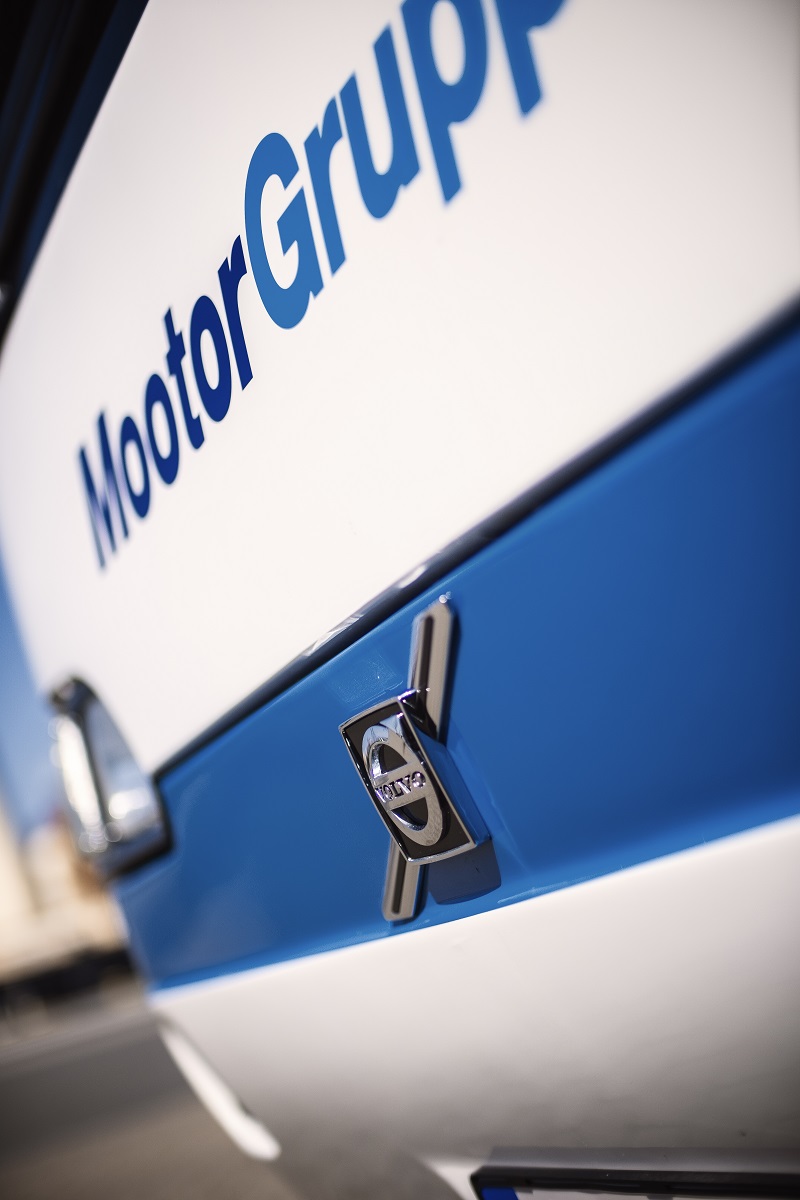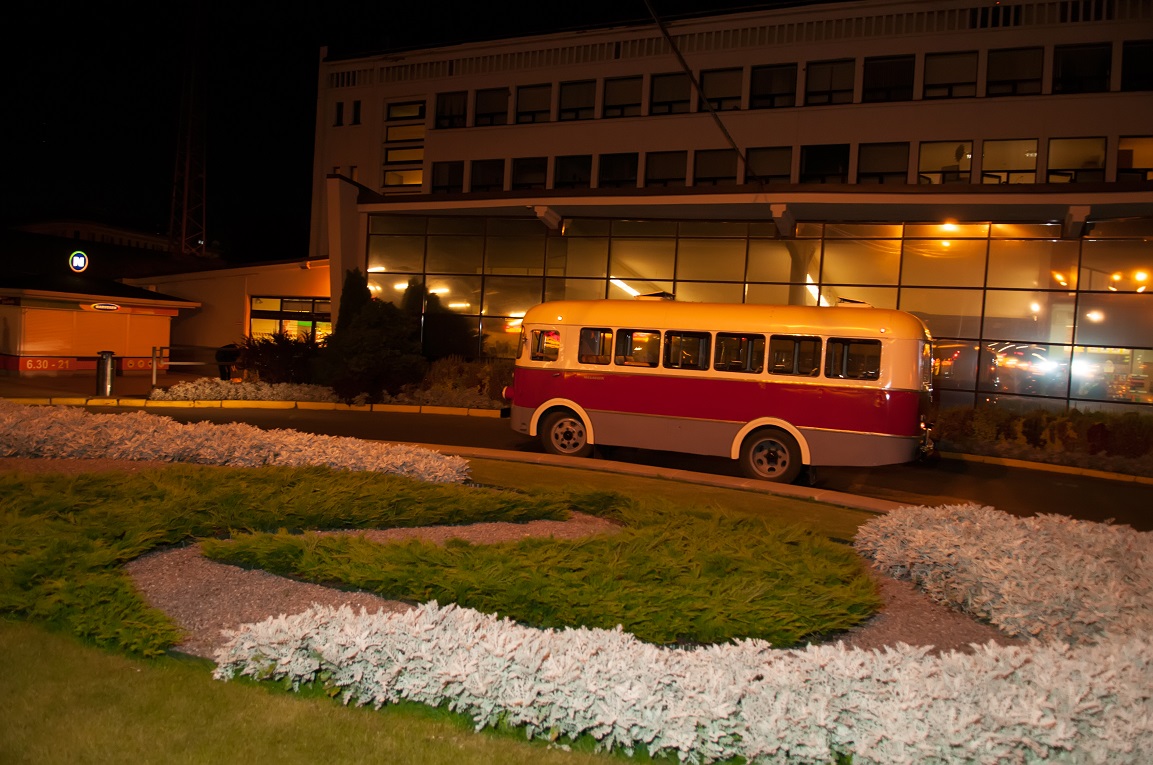-
ZOB Hamburg (GERMANY)
-
Daugavpils coach terminal (LATVIA)
-
Belgrad bus station (SERBIA)
-
Joint Stock Company Nordeka (LATVIA)
-
Malmö (SWEDEN)
-
Kaunas bus station (LITHUANIA)
-
Riga inrenational coach terminal (LATVIA)
-
JSC Tolimojo keleivinio transporto kompanija (LITHUANIA)
-
Zagreb bus station (CROATIA)
-
Tallin bus station (ESTONIA)
-
Ljubljana International Coach terminal (SLOVENIA)
HISTORICAL BUS PARADE
Welcome to the Parade and evening ride of historical Riga/Tallinn buses, kings of the roads, dedicated to the 60th anniversary of modern Riga – Tallinn bus line. Get your boarding pass and enjoy the trip!
When: September 3, 2018, at 8:00 p.m to 10:00 p.m
Where: Riga International Coach Terminal platforms
Supported by: Mootor Grupp AS (Estonia) and Riga International Coach Terminal JSC (Latvia)
During the event can be filmed and photographed. By participating in the event, you confirm that you have been informed about it and allow your photo and video materials to be used for the publicity purposes of the Association, APC.
-
Ikarus 55 Lux
Ikarus was a bus manufacturer based in Hungary. There are a number of great achievements belonging to the company and one of those were the Ikarus 55. Intercity bus Ikarus 55.14 Lux of 1969 year of release. For his elongated body shape, in due time he received his own name among the drivers and passengers — “Cigar”. All 30 seats looked kind of stiff and people were justified to ask what was so luxurious about it. It had Ikarus Lux written on it, so obviously it was luxurious.
Technical data
Length of Ikarus Lux is 11 meters and the bus is suitable for travelling only on paved inter-city roads.
- The bus has uncomfortable faux-leather seats, which are adjustable but, on a longer journey on a hot day, can also make your backside sweat.
- Sunroofs in the ceiling provide ventilation in a manner that leaves men wanting more air and women almost catching a cold.
- Smaller luggage is placed in the compartment below the floor, larger bags can be placed in the back of the bus.
- Engine noise is loudest in the back of the bus. Screaming is one way to solve the communication issue, we also recommend forwarding letters.
-
Ikarus 255
Ikarus 255 serial production began in 1972 when company decided that for city transportation they need new buses. A significant part 16219 copies of buses was sent to the USSR, for which they were painted in dark red with a white bottom,
In total, for 1983, there were 24187 buses of this model and 9 more by 1991.
Hungarian inventor Ernõ Rubik invented his Rubik’s cube in 1974 probably as he was sitting on the back seat of the Ikarus 255 and relaxing to the soft purring of the engine.
Our Ikarus 255, which rolled out of the Magyar factory in 1979, was at the moment the most rectangular bus out there and it was nicknamed The Aquarium for a reason. The 36 passengers on the bus could see the world and be seen by the world at the same time.
Technical data
Length of Ikarus 255 is 11 meters and the bus is suitable for travelling only on paved inter-city and near-city roads.
- The bus has uncomfortable but adjustable faux-leather seats.
- Sunroofs provide ventilation and it can mess up your hair if you do not use enough hairspray.
- Smaller luggage is placed in the compartment below the floor.
- Engine is louder in the back of the bus, geeks and chatterboxes always sit in the front.
-
Mercedes O303
The Mercedes-Benz O303 was an integral coach manufactured by Mercedes-Benz between 1974 and 1992. It was also available as a chassis, where the customer could choose to get the lower part of the front or even the entire front including the windscreen from the integral model shipped with the chassis. The Mercedes-Benz O303 was launched in 1974 at the Paris Motor Show as a replacement for the O302. In 1985, the O303 was the first bus to offer anti-lock braking. Over 33,000 O303s were built over an eighteen-year period.
The Mercedes Benz O303-15RHD with its 45 seats seems like a regular bus today.
But imagine the year 1984 – on this side of the Iron Curtain we were hyped about folding bicycles and sneakers, while somewhere out there, German tourists were travelling around in an air-conditioned bus with two colour TV’s, WC and a sink, a refrigerator and a coffee machine. All we are left with now is either tears or powerless fury.
Technical data
Length of Mercedes Benz O303-15RHD is 12 meters and the bus is suitable for travelling everywhere – be it city or rural area.
- Every passenger has a comfortable adjustable seat and spot-ventilation.
- Everyone have to share one WC, however.
- Compartment located below the floor has enough space to meet the modern needs.
- All in all, it is a comfortable bus.
-
Volvo B12 Carrus
It sounds unbelievable but the year 1994 was more than 20 years ago.
In 1991 Carrus factory changed the body frame material to stainless steel, and Carrus Stainless was used as the base material in all the bodies manufactured by Carrus factories. In the mid 1990s, the Carrus Oy Delta body models were completely updated taking into account new safety requirements for modern bus bodies. The new model were named the Star 602.
This bus is the bus of all buses, but most people do not even know that it is a bus. Most buses rolling around in Nordic countries are Carruses. These buses never break thanks to the body constructed on a Volvo or Scania basis that will never rust because it is made of stainless metal. No normal human being has ever heard of a bus called Carrus yet everyone has travelled in one. We did not want the Carruses to feel left aside so we decided to promote one of them and add it to our shiny set of timeless buses.
Technical data
Carrus 602 Star is a hard working bus that is suitable for a year-round use everywhere. During winter the bus will be warm regardless of the temperature outside and in summer the bus is nice and cool even during a trip to south. The bus has about 49 seats, a seat for the guide with a microphone and private space for anyone with a small bladder. The luggage compartment is very spacious and fits all baggage. Although it is a perfectly normal bus the seat backs do not have a personal media screen for each passenger. So in a sense, for us, it is still a historic bus.
-
ZIS 127
ZIS-127 is the first bus that was designed and manufactured in the USSR. It was intended for intercity flights, mainly for long distances (for example, Moscow-Simferopol and Moscow-Riga). Release of this vehicle was from 1955 to 1961.
When Stalin was everywhere, then he literally was everywhere, even on the nose of the first Soviet intercity express bus ZIS 127 – an acronym of Zavod Imeni Stalina (Factory named for Stalin). Of course today, we are used to fast and comfortable buses, but to embrace the background of the fancy bus built in 1956 better, we let you know that a year earlier people travelled in the back of lorries listening to the sound of the tarpaulin fluttering in the wind.
The bus was equipped with corrugated aluminum sides and a lot of chrome parts, so popular at that time in the automotive industry. Inside the vehicle at the same time there could be 32 passengers. Armchairs are equipped with reclining backs for convenience. In addition, the first Soviet bus had heating, lighting, a ventilation system and a thermometer with a clock.
The Soviet ZiS-127 worked on diesel fuel. A 6-cylinder two-stroke engine was used for this model.
A total of 851 copies were produced.
We are proud to own the last working Zis 127 in the world!
Technical data
Length of ZIS 127 is 10 meters and the bus is suitable for travelling only on paved inter-city roads.
- The bus has comfortable, but not adjustable seats.
- Every passenger can take smaller luggage that can be placed in the compartment below the floor.
- Noise level is higher in the back of the bus, so in order to communicate, you must raise your voice.
- Top parts of the windows can be opened and some fresh breeze comes in through there. Unfortunately, this is also the reason why the radiator is incapable of heating the bus during the cold. However, if the hearts are warm then this might not be an issue at all.
-
Irizar Scania
RAF-976
“RAF 976” was used for passenger transportation in Latvia in the 60’s.
- Seats: 28;
- Comfort level: one of the highest in the 60’s;
- The bus became popular with the name “wooden ikaruss”.
The RAF renewal story began in 2002 when it was bought by company M.E.LAT-LUX Ltd., a general representative of Daimler EvoBus GmbH (Germany) in the Baltics.
“RAF 976” was completely renovated by the hands of the company’s employee enthusiasts, using only the original parts and maintaining the originality of the bus. The bus was restored not as a museum exhibit but as a real transport vehicle.














